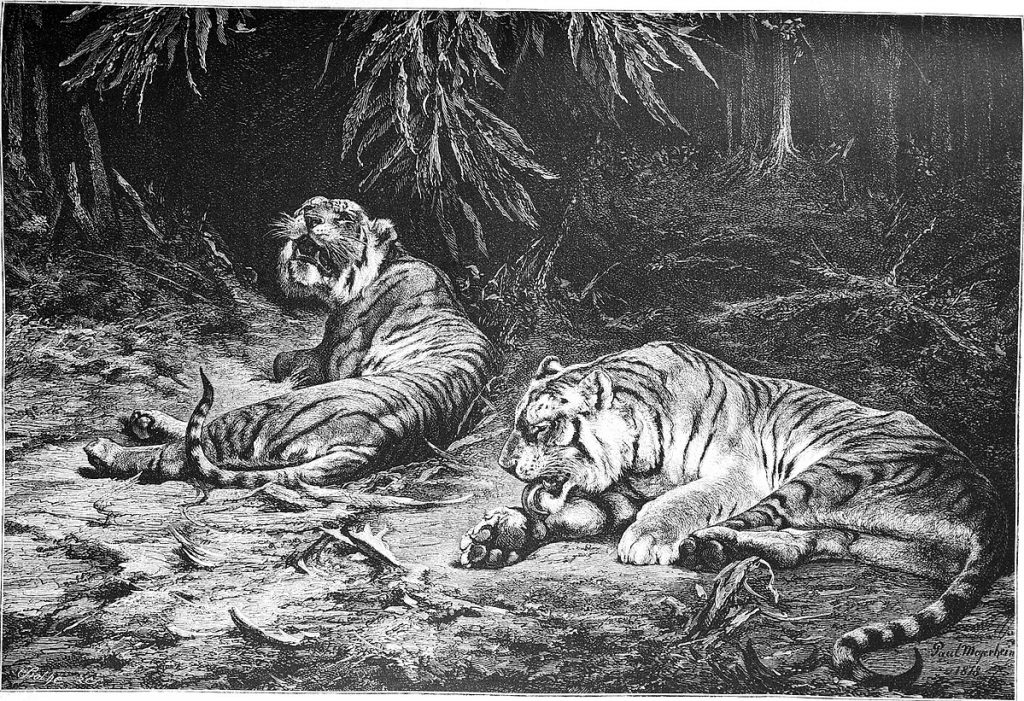Tigers, one of the most recognizable of the big cats, are an endangered species with many subspecies out of which some have already gone extinct. Multiple of these lived during the prehistoric times. In addition to natural calamities and other similar threats, loss of habitat, hunting, and poaching are the main reasons behind such extinction, especially in the recent years. Below are the names of tigers that have been wiped off the earth.
Alternatively known as Hyrcanian tiger, Babre Mazandaran, Turanian tiger, and Balkhash tiger, its geographical range is quite prominent through the common names. Often considered to be one of the biggest cats that ever lived, the narrow stripes on its body were closely placed with each other, creating a recognizable pattern. Habitat loss and hunting are two main reasons of its extinction that happened around 1970.
The Javan tiger got its name from its distribution in the islands of Java, though from mitochondrial DNA testing it has been deduced that these tigers inhabited in the Sunda Islands as well. Since there is no way to trace the exact year of its extinction, it is assumed that it was alive till the 1970s or early 1980s. Some specimens were kept at zoos, but those too got affected by the Second World War and died because of attacks and lack of food.
In the native Indonesian language, these tigers are called Samong or Harimau Bali. The first tiger subspecies to be officially considered extinct, it happened around 1950. Like the Javan tigers, they also lived in the Sunda Islands. It is believed that these tigers mainly preyed on Javan rusa. The last reported Bali tiger was killed in West Bali. Growing human population in their native island, along with hunting pushed the tigers to extinction.

The prehistoric tiger subspecies, scientifically known as Panthera tigris trinilensis, went extinct around 50,000 years ago. Fossils indicate that these tigers might be similar to the Indo-Chinese tigers in appearance, though this has not been categorically proven.
This tiger, as assumed to be the world’s oldest one, lived around 2 million years ago. Scientists have guessed from its fossils that the tiger might have been similar to jaguar in physical appearance. The scientific name Panthera zdanskyi has been given in honor of the Australian paleontologist Otto A. Zdansky.
Scientifically known as Panthera tigris acutidens, this tiger subspecies was first elaborately described in the year 1928. However, the scientific name had not been given till later in 1947, when American paleontologist Walter W. Granger and Dutch paleontologist Dirk Albert Hooijer named it. A specimen of its humerus bone as found is around 12 inches long, while a tibia was also found, around 11.7 inches in length and 3.2 inches in diameter.
Assumed to be similar in shape and size with the Bengal tiger, or slightly larger, the fossils of these tigers, scientifically known as Panthera tigris soloensis, have been found from the Ngandong village. The probable weight of the male Ngandong tiger could be around 470 kg.
Although native people have been sure about the existence of this tiger, Scientists failed to find anything that would prove these claims for years. Then some excavations produced a navicular bone, a metacarpal bone, and an upper canine tooth that are believed to be of this animal. While according to native people these tigers originated long before the prehistoric era, the scientific evidence indicates that the tiger might have existed from the late Pleistocene era to early Holocene era. The natives also claim that these tigers had a brown body with faint stripes.
White tigers, often thought to be extinct, are actually a variation of the Bengal Tiger with a specific genetic combination that gives them the color. And as long as Bengal tigers are there, white tigers can still be born.
The common concern about tiger in general should be the rapid drop in their number as they are losing their natural habitat due to human interference. Wildlife rescue and preservation organizations around the world are working hard to protect and revive the population of the rest of the species. There are numerous reserved forests and protected areas where tigers can now live safely, though the threat is not gone yet.